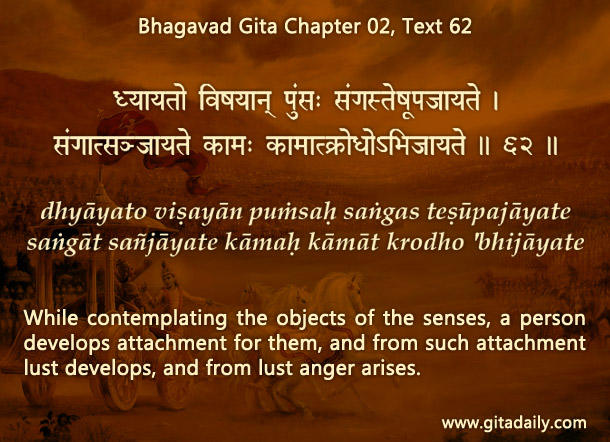If an asteroid comes within the gravity pull of a planet, it is dragged down to that planet. Similarly, during our life-journey, the gravity pull of sense objects – their promise of pleasure – can pull us towards them, away from what we intended to do. The Bhagavad-gita (02.62) warns us that contemplation on sense objects can drag us towards self-destruction.
Unlike the largely fixed gravity pull of celestial objects, the gravity pull of sense objects varies according to individual conditionings and conditions. If we are conditioned to indulging in a particular sense object, then its gravity pull on us will be much more than that on others. And if we are in a vulnerable emotional condition such as boredom or anxiety or distress, the sense object’s promise of quick relief will allure us more than at other times.
Another consequential difference between the two gravity pulls is that the gravity pull of sense objects depends not just on physical proximity but also on mental proximity. We can get attracted to them not just when we are physically close to them, but also when we keep them close mentally, that is, when we unguardedly entertain thoughts about how they will give us pleasure.
This mental proximity aspect is consequential for our protection and liberation. We live in a largely materialistic culture where we can’t always avoid sense objects physically. But we can avoid their mental proximity by filling our mind with Krishna. When we cultivate his focused remembrance through daily sadhana and relish inner fulfillment therein, then the resulting devotional momentum will empower us to resist the gravity pull of sense objects. More importantly, Krishna, reciprocating with our spiritual diligence, will pull us towards him by his supreme gravity. Thus, we will gradually relish increasing and lasting fulfillment in him.


Leave A Comment